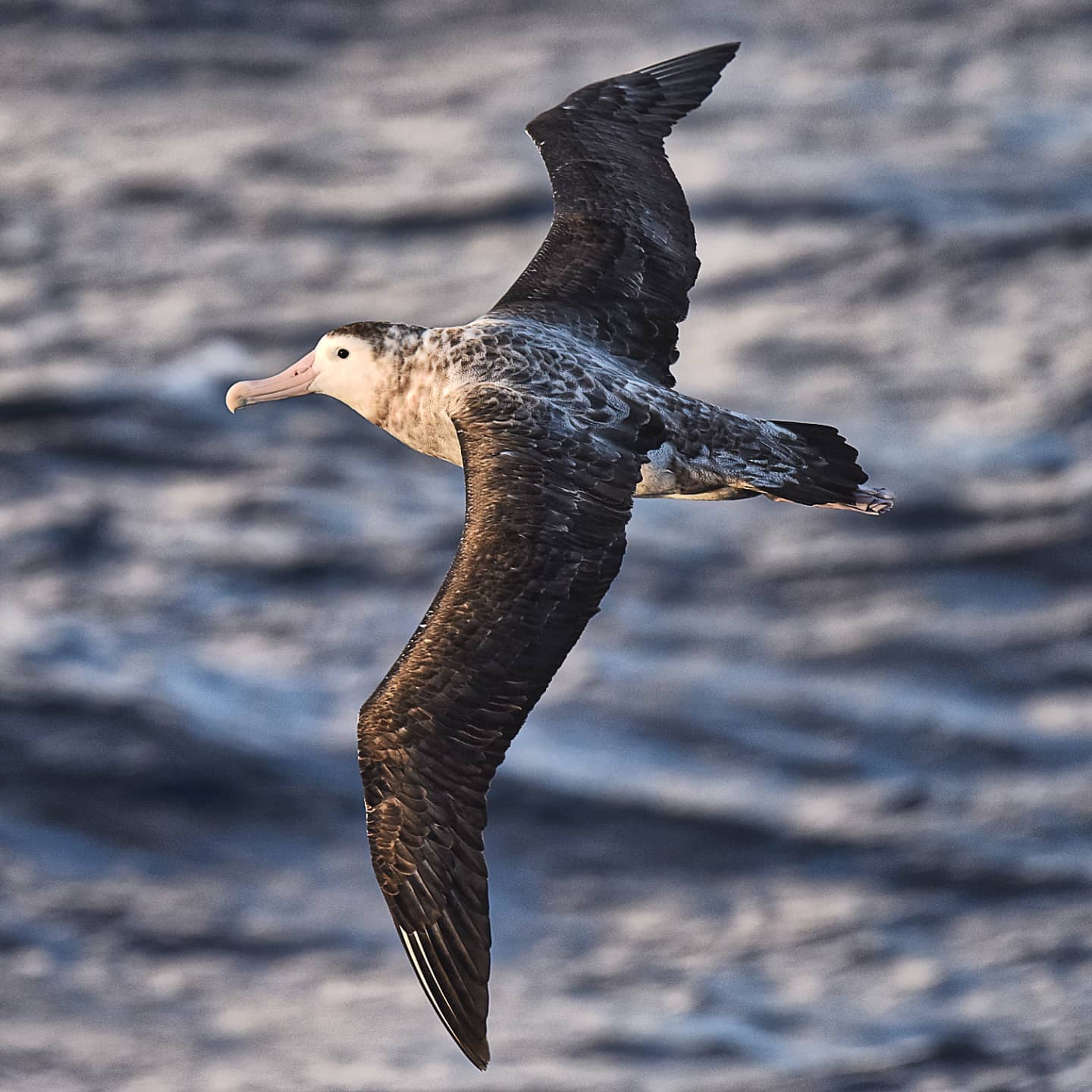 An Antipodean Albatross in flight. Photograph by Hannah Shand/Jordan
An Antipodean Albatross in flight. Photograph by Hannah Shand/Jordan
Kath Walker and Graeme Elliot (Albatross Research) have prepared a report, Antipodean wandering albatross satellite tracking and population study on Antipodes Island in 2021 and 2022, which has been made available by New Zealand’s Conservation Services Programme.
Results of the study indicate a number of factors involved in the population decline of Antipodean Albatrosses but emphasise female mortality as a key contributor, with interactions with pelagic surface long-line fisheries being the cause of death for a significant number of young females. The report also highlights the availability of numerous seabird bycatch mitigation measures which, if implemented by fisheries, would have a positive impact on population recovery.
Building on long-term population monitoring which has taken place regularly since 1994, the data gathered from the four-year satellite tracking and population study (2019 – 2022) have updated knowledge of the at-sea distribution of the Antipodean Albatross, as well as providing information on their biology.
The report's summary follows:
“The Antipodean wandering albatross Diomedea antipodensis antipodensis has been in decline since 2005. The decline appears to be driven in large part by high female mortality, though reduced breeding success and increased recruitment age have exacerbated the problem. Research into the causes of and solutions to the falling numbers of Antipodean wandering albatrosses includes an annual visit to the breeding grounds on Antipodes Island, and this report describes the results of the field programme in the 2020/2021 and 2021/2022 breeding seasons.
In total 93 pairs nested in the study area in 2021 and 90 pairs in 2022. The number nesting in 2022 across the whole island was estimated to be 2,927 pairs, the second lowest ever recorded. Measurement of female survivorship in 2020–2022 was detrimentally affected by the very late timing of fieldwork in March 2020, artificially exacerbating existing high interannual variation in female survivorship. While the population has been approximately stable for the last three years, there is no sign of recovery.
Most of the 40 courting and breeding albatrosses to which satellite transmitters were attached in March 2020 (Elliott & Walker 2020) survived the year, but one male breeder W-659 appeared to be killed on a Chinese long-line. Breeding birds and birds which had expected to breed but didn’t were found to retain their transmitters significantly longer in 2020 than non-breeders, presumably because feather moult is postponed whilst birds breed. While most of these transmitters were eventually lost at sea, one solar powered and two battery-powered transmitters were recovered from birds when they returned to Antipodes Island in January 2021.
In January 2021 a further 66 satellite transmitters were deployed, 36 on adults and 30 on chicks about to fledge. While most adults survived the year, the transmitters of three juveniles stopped close to pelagic long line vessels and may have been caught. In June 2021 another tagged juvenile, W-20k, was confirmed caught by a Taiwanese long-liner when its bands, along with the metal band of an adult female Antipodean wandering albatross O-805, not wearing a satellite tag, were recovered from the vessel. Given only a small proportion of the Antipodean wandering albatross population are banded (2.7%), to have caught two banded birds suggests many more birds without bands will also have been caught. Given the number of satellite transmitters deployed in 2019–2022 (220) and the number of days from which locations were received from the birds (38,812) the estimated reported fisheries related mortality of satellite-tagged birds is about 2% per annum. However, capture of satellite-tagged birds is likely considerably higher than 2% as the two captures that were documented came not from fishing operators voluntarily reporting bycatch, but from detection of an interaction from the combination of tracking data and Global Fishing Watch. It is likely that additional tagged birds whose transmitters stopped close to fishing vessels were also caught but their capture was not reported.
In January 2022, 50 satellite transmitters of two types were deployed on adult Antipodean wandering albatrosses. Soon after deployment data stopped being received from the 10 “Icarus” transmitters because of a failed data-agreement with Russia. The remaining 40 (30 on adults, 10 on juveniles) were of the second type of which 26 were still transmitting at the end of July 2022.”
Reference:
Walker, K. & Elliot, G. 2022. Antipodean wandering albatross satellite tracking and population study on Antipodes Island in 2021 and 2022. Nelson: Albatross Research 28 pp.
Posted 04 August 2022

 English
English  Français
Français  Español
Español